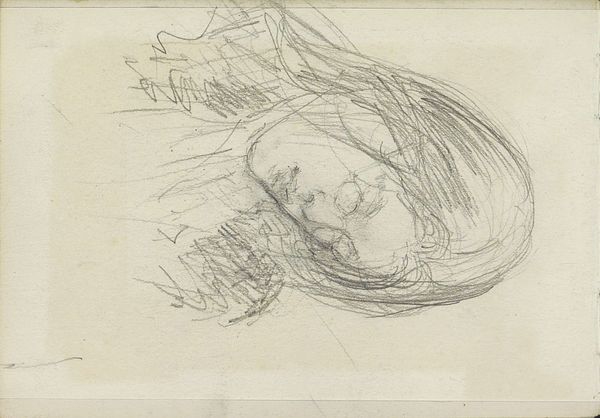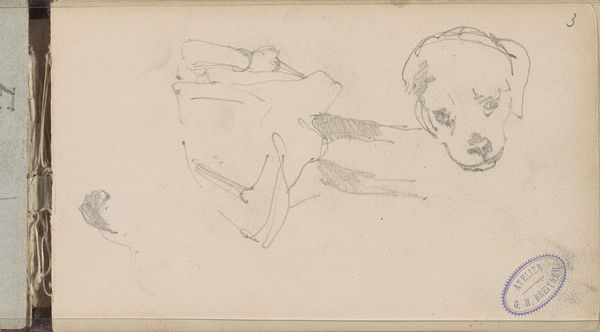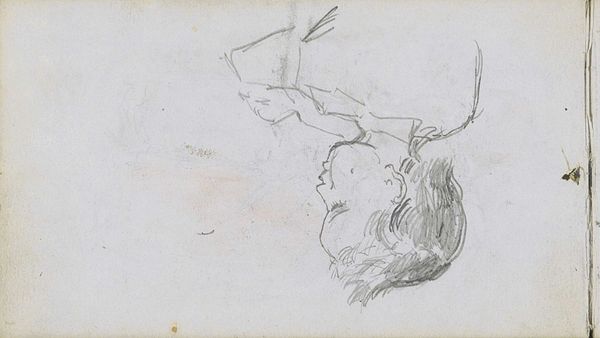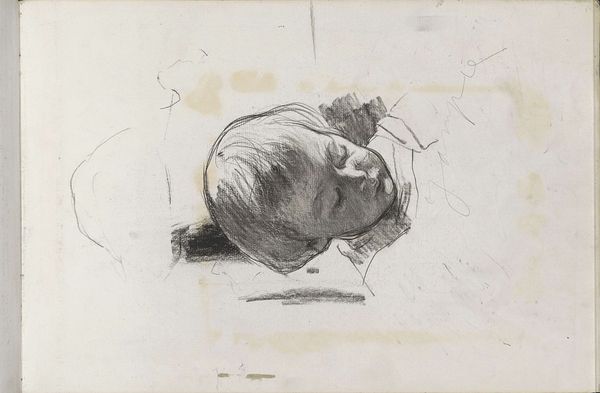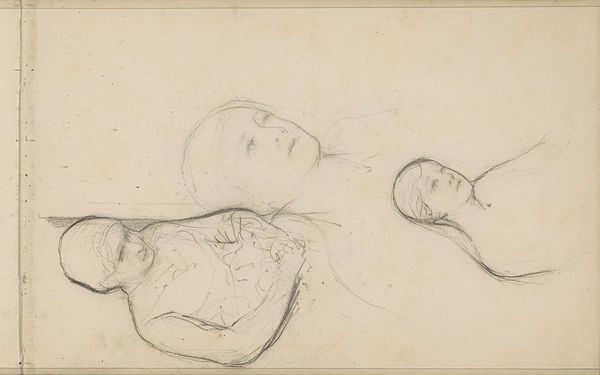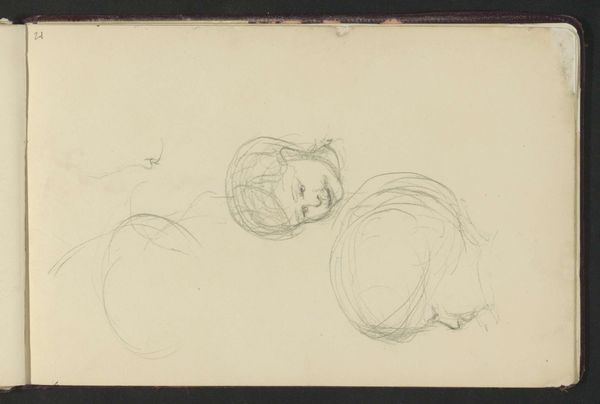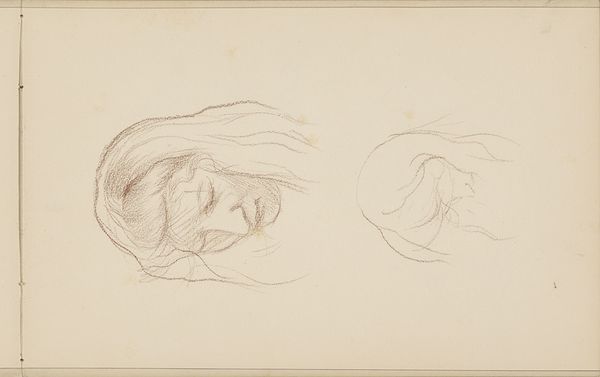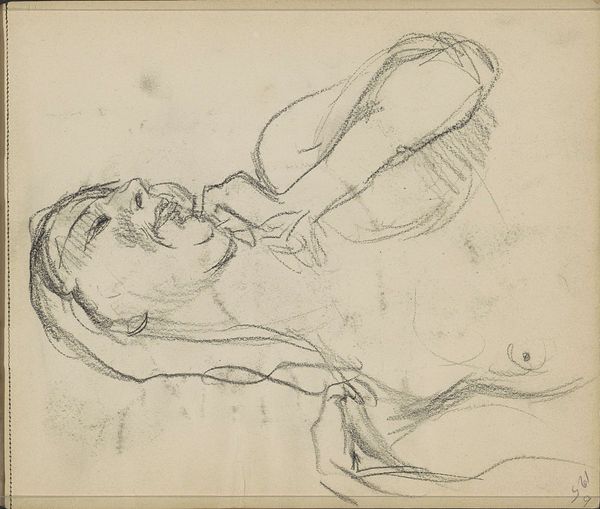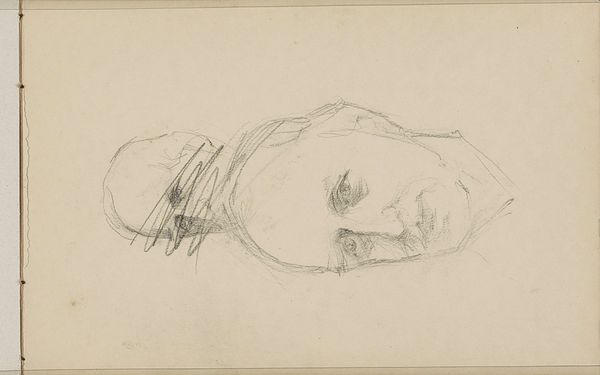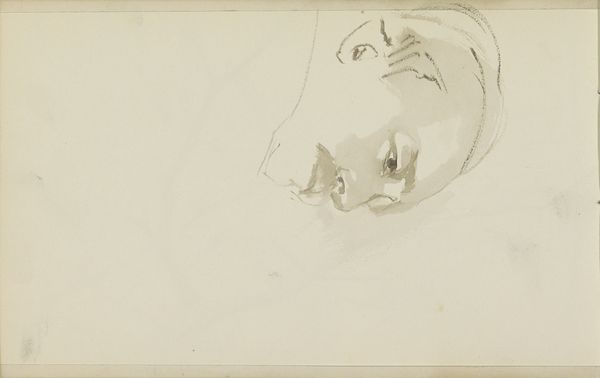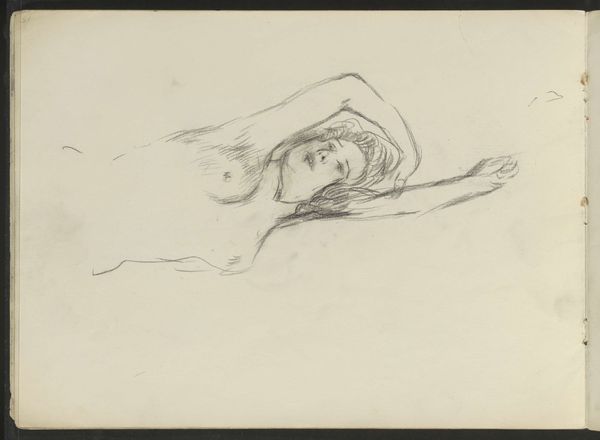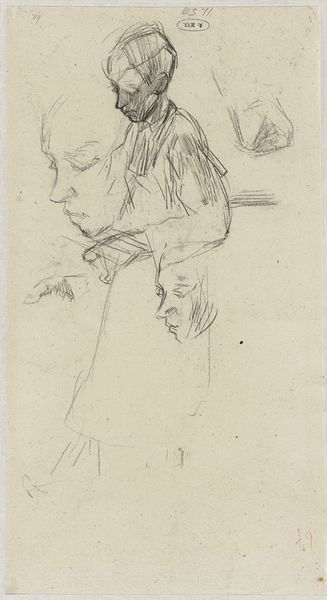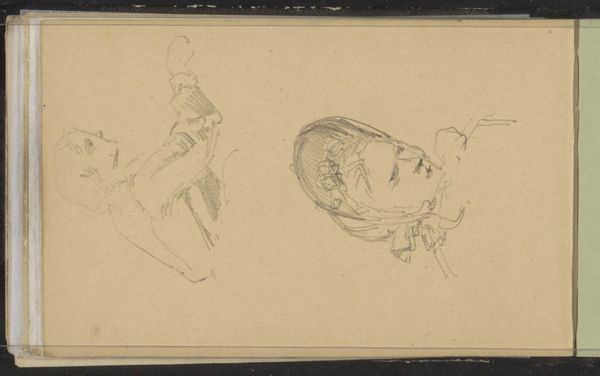
drawing, paper, pencil
#
portrait
#
drawing
#
paper
#
pencil
#
academic-art
Copyright: Rijks Museum: Open Domain
Curator: Here we have Jozef Israëls’s pencil drawing, “Koppen van twee meisjes en een schrijvende hand,” created sometime between 1834 and 1911. Editor: It strikes me as more a collection of fleeting impressions than a formal portrait. There's a dreamlike quality to the scattered compositions across the page. Curator: Yes, it is precisely the interplay of light and shadow rendered so skillfully with just pencil on paper that allows for that impression. Note the circular composition, it's rather unorthodox and free from standard conventions. Editor: Do you think this captures Israëls’s engagement with his immediate surroundings? These images almost feel lifted from a personal journal rather than an academic project, especially the small writing hand. Curator: Considering the historic conventions that Israëls’s style reflects, the sketch provides evidence of academic interests in portraiture alongside studies in human figuration within the space. There's a clear attention to classical lines of structure in the human figure itself, the neck, the angle of the nose, each conveys a level of mastery. Editor: Agreed, it’s undeniably informed by the artistic values and styles of his time, especially concerning portraiture conventions, while capturing something unstudied. Could the looseness perhaps have been a conscious effort? Or are the images of women presented as idealized types within social spaces? Curator: The lack of specific detail allows the subjects to transcend any immediate context. We aren't meant to know these figures specifically, instead focusing on shape, angle, and tone, as a practice piece is apt to promote. Editor: This all lends to the artwork's lasting effect. Looking at the play of light, shadow, form, and content that seems more valuable here. It seems that studying the drawings like this provides us with deeper knowledge of art's value across time. Curator: I concur. By considering it through these lenses, it illuminates not only the nature of Israëls' creative processes but also speaks volumes about drawing and the potential for human connection.
Comments
No comments
Be the first to comment and join the conversation on the ultimate creative platform.
